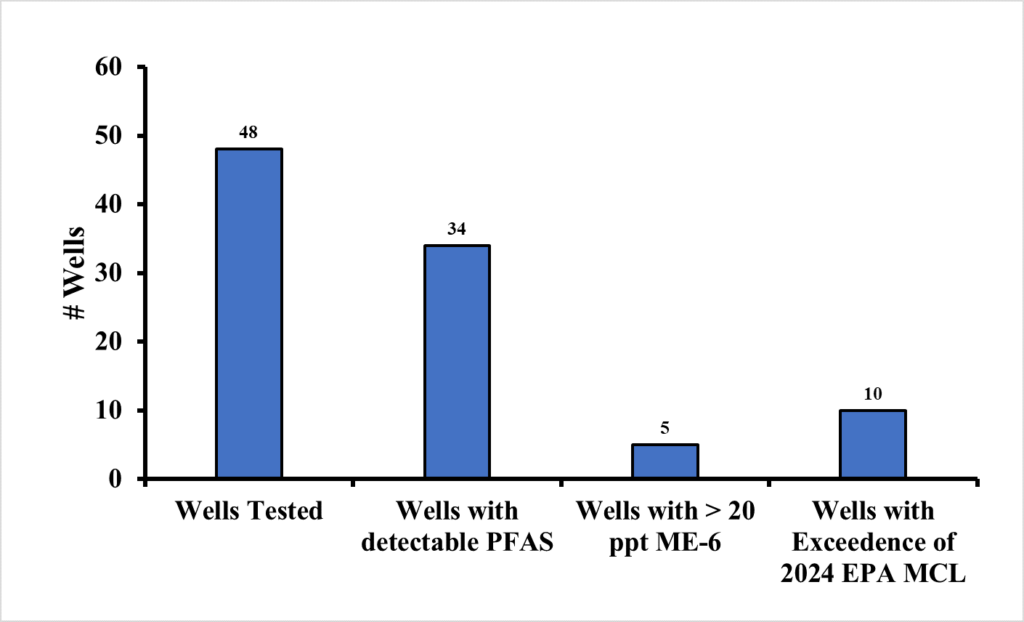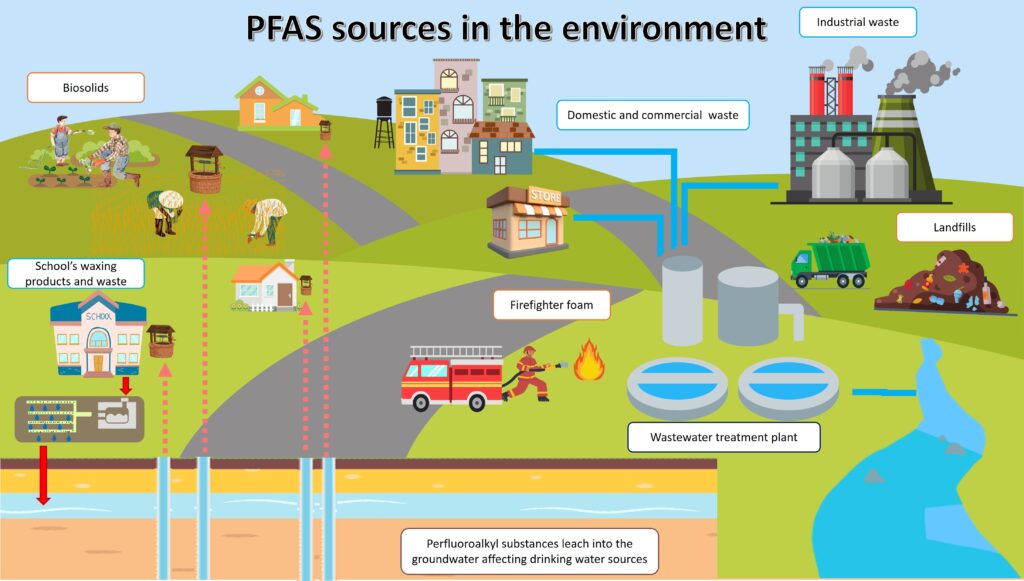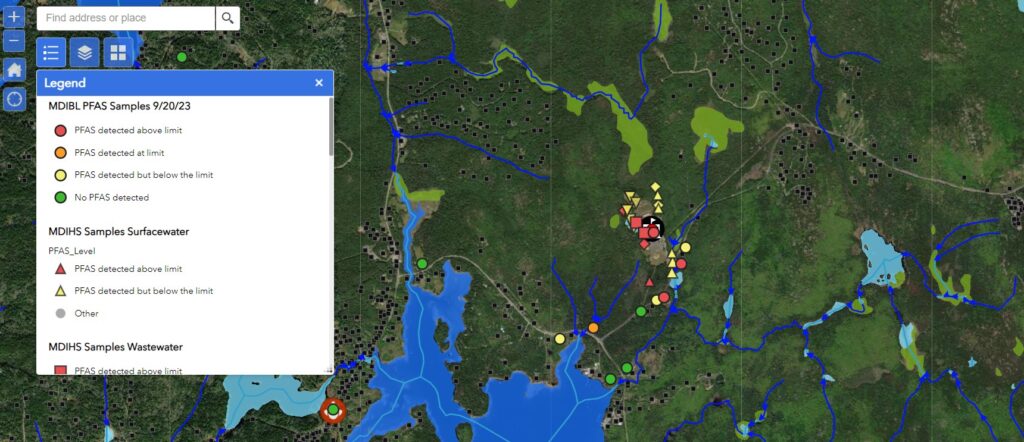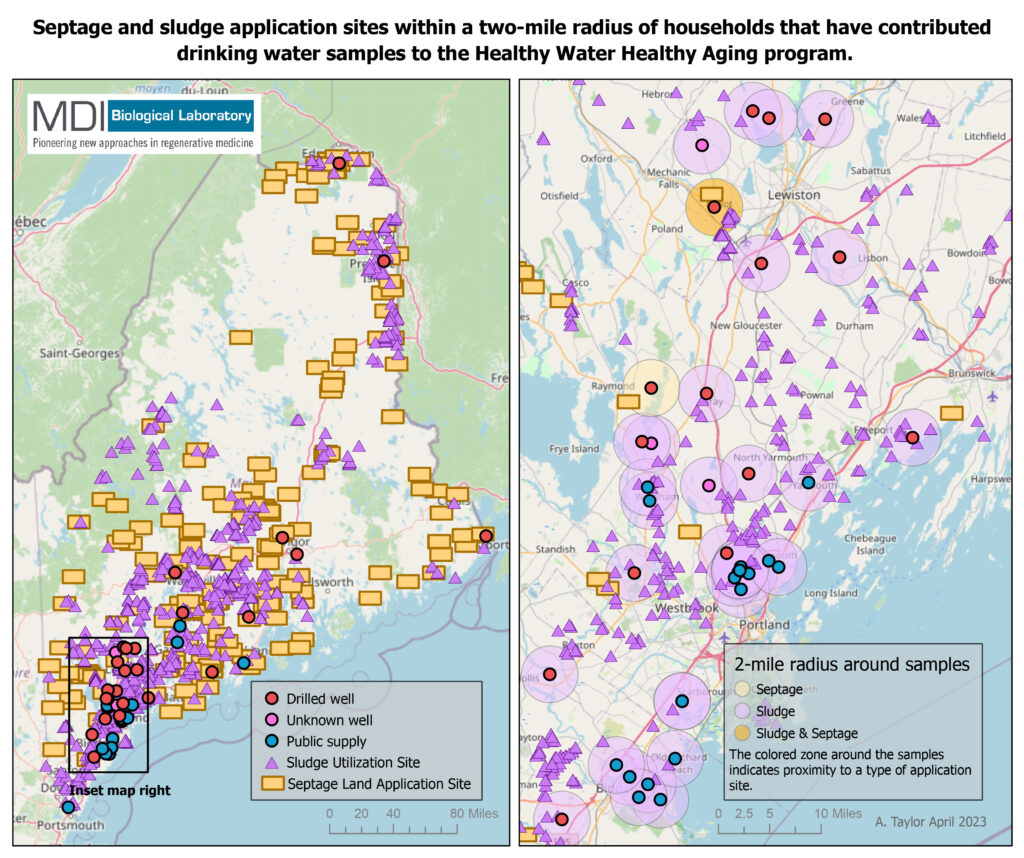Per- and polyfluoroalkyl substances, or PFAS, known as forever chemicals, are man-made substances that do not naturally occur in the environment and are known to have negative effects on human health. By testing well water samples for these chemicals, we can better understand the health risks for Maine households.
People in Maine are concerned about the potential for PFAS in their drinking water; the reason for their concern is clear. Maine has been in the news due to the discovery of contaminated soils on farms where sludge from sewage treatment plants was used as fertilizer over the last several decades. Most people in these rural areas depend on private wells as their source of drinking water, and PFAS contamination of wells has been recently documented.
Other areas in Maine are also at risk of contamination. We have been testing private wells on Mt. Desert Island and have found a surprising number of homes with PFAS in drinking water, particularly those on private wells. We have partnered with the town of Tremont to help increase the rate of well water testing for PFAS. If you are a year-round resident and are interested in having your well tested for PFAS, go to the link below, and we will provide you with a test kit that will be analyzed at Maine Laboratories at no cost to you.
As of April 2024, we have tested 48 wells on Mt. Desert Island. Of these, 34 have detectable PFAS, 5 exceed the Maine standard of >20 parts per trillion for six PFAS chemicals, and 10 exceed the new U.S. EPA standards that have recently been released.

We have found that rural schools can be a source of PFAS contamination in rural communities. We have tested tap water samples from households near rural schools with PFAS contamination and discovered that some of them have elevated PFAS chemicals. The image below shows how schools with septic systems that leach contaminants into the groundwater can contribute to the PFAS problem in rural communities.


The interactive map below shows the results of PFAS testing near MDI High School and Tremont Consolidated School in Maine. PFAS was detected in drinking water in these schools, prompting further investigation. We have tested nearby households and found that some also have contaminated wells. This is an ongoing community project to determine the levels of PFAS in drinking water, provide homeowners with additional information, and help them understand how PFAS is moving through the groundwater.
The map is preset to open with all sample sites, line features (streams), area features (lake, swamp, etc.), and bedrock units near MDI High School. The layer list is located on the map legend and allows for the addition of additional layers. Data from households near Tremont School can be found by typing “Tremont School Maine” into the “Find Address” search bar.

Healthy Water, Healthy Aging
We have already joined forces with multiple partners across the state to engage Mainers in completing drinking water surveys and submitting a well water sample for analysis of arsenic and other toxic metals as part of a public health study. We plan to identify 115 households with the highest risk for potential PFAS contamination and provide them with test kits, information, and support for mitigation. The map below displays the areas in Maine identified as potentially contaminated with PFAS in relation to areas where “Healthy Water Healthy Aging” project participants have already contributed water samples for analysis of toxic metals. Participant households within a two-mile radius of sludge and septage application sites will be among the first tested for PFAS in our study.

EPA
In March 2023, the EPA proposed the first national drinking water standard for “forever chemicals,” which are dangerous to human health. This will set drinking water standards for six PFAS chemicals: perfluorooctanoic acid (PFOA), perfluorooctane sulfonic (PFOS), perfluorononanoic acid (PFNA), hexafluoropropylene oxide dimer acid (HFPO-DA, commonly known as GenX), perfluorohexane sulfonic acid (PFHxS), and perfluorobutane sulfonic acid (PFBS).
On April 10, 2024, the EPA established the following levels (see https://www.epa.gov/sdwa/and-polyfluoroalkyl-substances-pfas). MCLG is the Maximum Contaminant Level Goal. MCL is the Maximum Contaminant Level enforceable level.
| Compound | Final MCLG | Final MCL |
|---|---|---|
| PFOA | Zero | 4.0 parts per trillion (ppt) (also expressed as ng/L) |
| PFOS | Zero | 4.0 ppt |
| PFHxS | 10 ppt | 10 ppt |
| PFNA | 10 ppt | 10 ppt |
| HFPO-DA (commonly known as GenX Chemicals) | 10 ppt | 10 ppt |
| Mixtures containing two or more of PFHxS, PFNA, HFPO-DA, and PFBS | 1 (unitless)Hazard Index | 1 (unitless)Hazard Index |
More information
EWG (Environmental Working Group) Guide to PFAS Water Filters
National Standard to Protect Communities from PFAS in drinking water
Maine Department of Environmental Protection
Taking Action